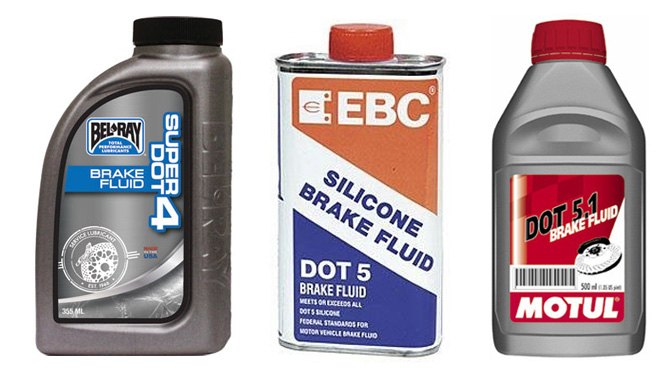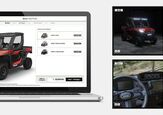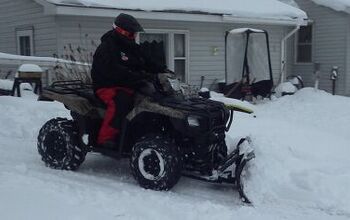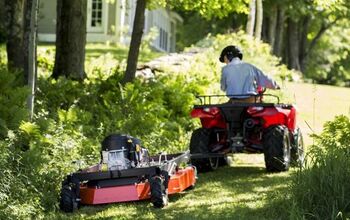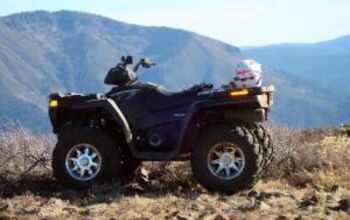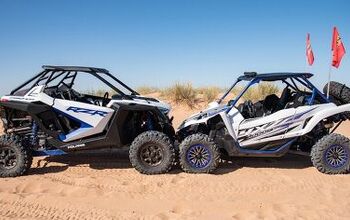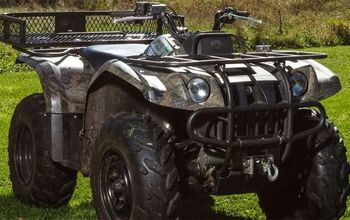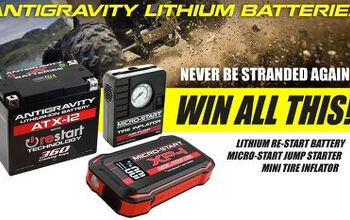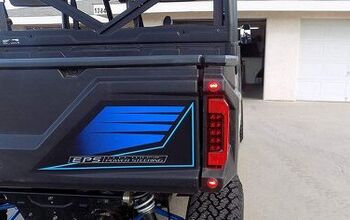Best Brake Fluids for ATVs and UTVs
Ever wonder what those numbers mean on brake fluid bottles?
Whether you’re riding a utility ATV with a single-lever brake system, a machine with independent front and rear brakes, or even a UTV with a single brake pedal, there will come a time during your ownership, that you will need to do some maintenance on your brake system. One thing that you need to check often is the ATV brake fluid levels in your reservoirs. Disc brakes, which are found on most current ATVs and UTVs, are essentially hydraulic systems that operate by a plunger increasing the pressure on the brake fluid. This pressure forces the pistons inside the brake caliper to push the brake pads onto the disc and bring your machine to a stop.
For your brakes to work properly, your ATV brake fluid has to be up to par. There are several factors that can affect the functionality and longevity of your brake fluid, and therefore your brake system. Air is not good for brake fluid. If air bubbles get into your brake lines, the bubbles can cause a loss of brakes, and usually at a time when you really need them. So whenever you hear someone talking about bleeding their brakes, they’re getting the air out. Air also contains moisture. Two of the four main types of brake fluids absorb moisture, and that is not good either. Here are some of the better UTV and ATV brake fluid options, followed by some helpful information about your brake system.
Table of Contents
1. Editor's Choice: Maxima DOT 4
Maxima got its start with motocross and two-stroke oil. It has built a reputation for oils and fluids of the highest quality and value. Its DOT 4 brake fluid has an anti-vapor lock formula that resists absorbing water. This fluid has a boiling point of Dry 469°F (243°C)/Wet 318°F (159°C). This means it should handle some pretty intense use without fail.
2. Lucas DOT 4
When it comes to off-road performance, few companies are trusted more than Lucas Oil Products, Inc. This synthetic DOT 4 brake fluid is a blend of polyethylene glycol ethers and additives which meet or exceed the industry minimum dry boiling point of 446°F. This fluid works in both disc and drum brake systems and is compatible with all rubber components found in a brake system.
3. Bel-Ray DOT 4
Another of the oil companies that grew out of motocross, Bel-Ray has been making top-quality fluids for decades. This UTV brake fluid exceeds FMVSS 116, SAE J1703 and ISO 4925 specifications, so you can trust in the performance of it. And again, it’s available for less that $7, making it a bargain.
4. Motul DOT 5.1
5.1 ATV brake fluid is the highest rated glycol-based (see below) brake fluid. This means is has a higher boiling point compared to DOT 4. Motul packages it with nitrogen instead of air to ensure it is the freshest brake fluid when it comes time to use it.
5. Motorex DOT 5.1
The Motorex DOT 5.1 has a boiling point of 356 degrees and prevents vapor bubbles from forming, even under extreme conditions. This is the brake fluid that comes in new KTM or Husqvarna dirt bikes and is highly recommended from dealers.
6. EBC DOT 5
DOT 5 UTV brake fluid is not compatible with any of the other brake fluids due to it being silicon based, compared to glycol. EBC’s DOT 5 is designed for high-performance brake systems. It has an extremely high boiling point, and can give your brakes a little softer feel, if your current setup is too harsh.
My Brake Fluid is Leaking - What Do I Do?
This can be a bit tricky. If you know where it is leaking from, that is good. If not, you’ll need to trouble shoot it until you find the source. Starting at the top, you have the ATV brake fluid reservoir/master cylinder. The reservoir is an interesting part. It is the beginning of the hydraulic action and vital to the performance of your brakes. Like anything, it can wear out with the moving parts and rubber gaskets. Luckily, rebuilding this part is easy and the kit to do so is pretty inexpensive. You can also get a kit for the rear system should that be the culprit.
The calipers can also be a source of a leak, especially if the machine has sat for a while, or is older. Fear not. Rebuilding a caliper is easier than the cylinder. The rubber seals are usually the part that breaks down. It’s something that can’t be avoided without climate controlled storage and extreme maintenance. The number one cause in norther climates is the water that gets absorbed by the brake fluid freezes and expands in the winter and does what you’d expect it to.
Will I Have to Bleed My Brakes?
When you add more ATV brake fluid, or change out the fluid for new, you are going to need to bleed out the brakes to ensure that no air gets trapped inside. Remember, and air bubble in your brake fluid will result in you grabbing a handful of brake on day and nothing to show for it. Your brake caliper will have a bleeder bolt on it. The easiest way to bleed the system is to use a bleeder, these are simple to use valves the attach tot that bleeder bolt. They have a one-way valve so no air gets in and it lets you pump the brakes and see what is coming out of the hose. Once you see no bubbles, you should be set. Like I said, it’s pretty easy. On a UTV, it’ll take more effort because you won’t be able to see. You’re going to need a helper. But hey, that’s why you had kids, right?
With proper maintenance and the right fluids in your brakes, you’ll be able to enjoy the ride and know that when you need to stop, you’ll have the ability. Brake work doesn’t have to be scary, after all it’s a pretty simple, hydraulic action. The more time you spend getting to know how it works, the better you’ll be able to relax on the trail.
Recent Updates
April 8, 2021: Added Lucas DOT 4 brake fluid to the list.
Become an ATV.com insider. Get the latest news first by subscribing to our newsletter here.
We are committed to finding, researching, and recommending the best products. We earn commissions from purchases you make using the retail links in our product reviews. Learn more about how this works.
What Do the Different Numbers Mean in Brake Fluid?
All brake fluid is broken down into main groups – glycol based, and silicone based. The glycol-based fluids are DOT 3, DOT 4 and DOT 5.1. These fluids are ranked by their boiling points, with DOT 3 having the lowest and 5.1 having the highest. Being all Glycol-based, they are compatible and can be mixed. The thing with the glycol fluids is, they will absorb water, so the brake system has to be sealed. As water contaminates the fluid, performance takes a nose dive and it can damage your brake system. DOT 5 is the silicone based brake fluid. It has a high boiling point and will not break down. It also doesn’t absorb water from the air. It is highly incompatible with the glycol-based brake fluids. Mixing them will result in the formation of globs of thick gunk that will clog out your brake lines and lead to an expensive repair.
Which Brake Fluid Do I Need?
The first place to look for information on your brake fluid is your owner’s manual. The cap of the brake reservoir will sometimes have the preferred brake fluid the factory recommends. Most factories use DOT4 or DOT 5.1. As long as it is a glycol-based fluid, you’re safe to use any of them. Just be sure that it isn’t DOT 5. If so, then you need to ensure you only use DOT 5. As for changing the fluids to suit your needs. If you you’re riding hard and on your brakes hard, it would be a good idea to bleed in DOT 5.1 fluid for the higher boiling point performance. For the average trail rider, DOT 4 or DOT 3 would be fine.
Derrek's love for all things ATV started when he was a mere 11 years old, growing up on his family farm. His mom gave him and his sister a choice - get a horse, or a three-wheeler. The sister wanted the horse, and Derrek wanted the ATV. Luckily he won out, and was soon burning up the trails on a Yamaha Tri-Moto 200. By the time he was 14, he had saved enough of his own money by working on the farm and in his folks restaurant to buy a new 4-wheeler. That happened the day he and his mom were driving past the dealership and saw 1987 Banshee. His mom had no idea what he was buying, and he never looked back. He's been riding ever since, and been writing professionally for many years. He has ridden all over North America and been behind the controls of just about every machine out there. And yes, he still has his 1987 Yamaha Banshee.
More by Derrek Sigler



